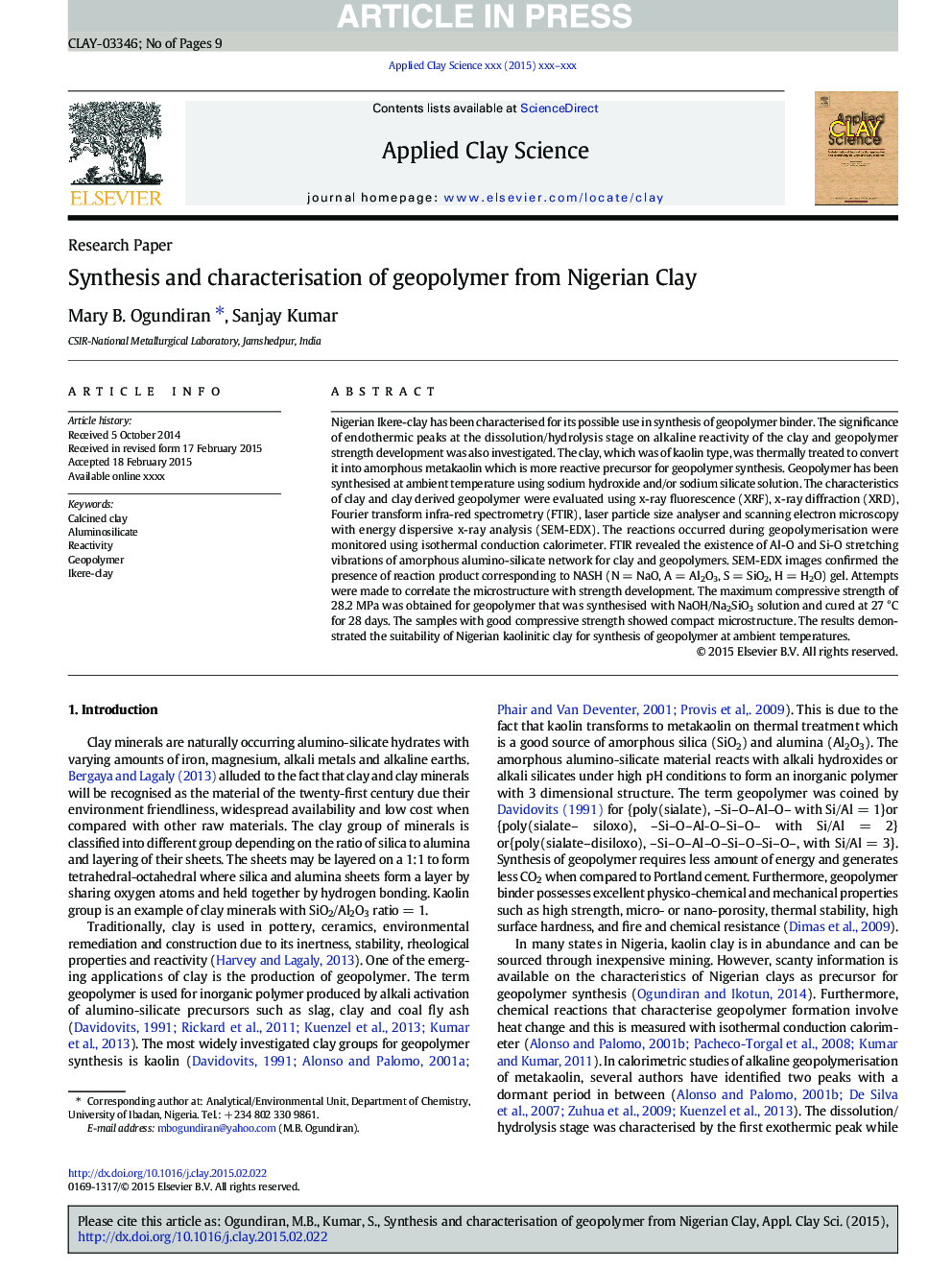| Article ID | Journal | Published Year | Pages | File Type |
|---|---|---|---|---|
| 8046559 | Applied Clay Science | 2015 | 9 Pages |
Abstract
Nigerian Ikere-clay has been characterised for its possible use in synthesis of geopolymer binder. The significance of endothermic peaks at the dissolution/hydrolysis stage on alkaline reactivity of the clay and geopolymer strength development was also investigated. The clay, which was of kaolin type, was thermally treated to convert it into amorphous metakaolin which is more reactive precursor for geopolymer synthesis. Geopolymer has been synthesised at ambient temperature using sodium hydroxide and/or sodium silicate solution. The characteristics of clay and clay derived geopolymer were evaluated using x-ray fluorescence (XRF), x-ray diffraction (XRD), Fourier transform infra-red spectrometry (FTIR), laser particle size analyser and scanning electron microscopy with energy dispersive x-ray analysis (SEM-EDX). The reactions occurred during geopolymerisation were monitored using isothermal conduction calorimeter. FTIR revealed the existence of Al-O and Si-O stretching vibrations of amorphous alumino-silicate network for clay and geopolymers. SEM-EDX images confirmed the presence of reaction product corresponding to NASH (N = NaO, A = Al2O3, S = SiO2, H = H2O) gel. Attempts were made to correlate the microstructure with strength development. The maximum compressive strength of 28.2 MPa was obtained for geopolymer that was synthesised with NaOH/Na2SiO3 solution and cured at 27 °C for 28 days. The samples with good compressive strength showed compact microstructure. The results demonstrated the suitability of Nigerian kaolinitic clay for synthesis of geopolymer at ambient temperatures.
Related Topics
Physical Sciences and Engineering
Earth and Planetary Sciences
Geochemistry and Petrology
Authors
Mary B. Ogundiran, Sanjay Kumar,
